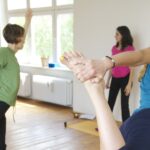Please note that this post was written in July when we were coming out from the first lock down. As of this week, November 2020 we have re-entered lock down and are not allowed to teach in the studio until the guidelines change again. Below, we refer to a Health Ministry phone number you can call that specializes in sports, if you have further questions.
Since the beginning of the Coronavirus lockdown in Berlin, we at English Yoga Berlin have been offering our yoga classes exclusively online. Slowly things are starting to open up, as the number of infected people go down. The question of whether it is safe to practice yoga in the studio again is one that yoga practitioners can only answer for themselves and their close contacts. Until there is a vaccine or easily accessible effective treatment a risk of infection remains. Here we put together a list of questions and answers for yoga teachers who have questions about teaching yoga during Corona times.
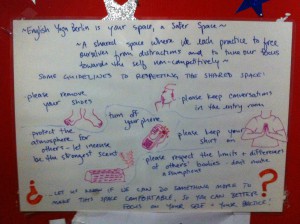
Safer Space for Yoga Guidelines
The question of what is safe regarding any risk also depends on the individual people involved. We all feel different levels of safety in different environments depending on our lived experiences, as well as both our physical and mental capacities. Those of you who have attended our in-person yoga classes know our safer space guidelines, we say “safer” because we cannot claim to create a space that is safe for everyone, but our aim is to do the best we can.
So, is it safe to practice yoga in the studio again?
The main page of the city of Berlin’s website about the measures in order for prevention of the spread of the virus don’t give specific info for teaching yoga during Corona, so on July 17th Pinelopi called up the Berlin Senatsverwaltung für Sport (phone number: 030 902230) to get answers about the guidelines they both suggest and enforce. These guidelines can be your starting point as someone who offers yoga classes in Berlin to help make your decision as to whether it feels safe for you to start practicing yoga in the studio again. But remember that they can change again.
How many participants can I have in the room?
Each person in the room needs to have a space of at least 1.5 meters in every direction around them. Since every room is shaped differently, it is not calculated by square meters.
Do we need to wear masks while practicing yoga?
Masks must be worn when you enter and move around the space, and go to the bathroom or change room. You can take your mask off at your mat, as long as you are keeping 1.5 meters distance from each other.
As a yoga teacher am I allowed to touch the participants to assist in poses?
If both the yoga teacher and participant are wearing masks, you are legally allowed to touch the participant, but it is strongly discouraged.
Can bathrooms and change rooms be used?
Yes, but only one person at a time in the bathroom or change room. Try to reduce bottlenecks and lines. It is the responsibility of the yoga teacher to disinfect the bathroom and any surfaces that have been touched after the class is over and everyone else has left.
Can we accept cash payment?
Yes, exchange of cash can be made, but after handling disinfect with hand-gel or wash your hands.
Do the windows need to be open?
Yes, you should ventilate the space as much as possible. If you can keep the doors and windows open the entire time, it is best. Try to create a through-flow from one side of the room to the other.
Do participants need to bring their own mats and other supplies?
Yes, this is highly recommended. If someone forgets to bring a mat and there are some available at your studio, you can lend one. But the yoga teacher is responsible for ensuring that the participant thoroughly disinfects the mat BEFORE and AFTER use.
Are we required to keep a list of contacts?
Yes, in case someone was infected in the class, the yoga teacher is required to keep a list of participants for 4 weeks, so that all participants can be contacted. The list should contain every person’s full name, address, and phone number.
We hope this answers some of your questions about teaching yoga during Corona times. If you have any other suggestions, please comment below!
For the month of August, Pinelopi’s Hatha Yoga will be back at our space on Görlitzer Str.
As always: wash your hands regularly and try not to touch your face. And if you are feeling some symptoms and you don’t know what they are, please stay home.
At English Yoga Berlin, we offer Hatha Yoga classes with Pinelopi and Vinyasa yoga with Juli. Our yoga Kreuzberg Berlin classes are open for and welcome to beginners, as well as people struggling with chronic pain. We also offer Berlin business yoga, and private yoga classes, as well as queer and trans prioritized community classes.







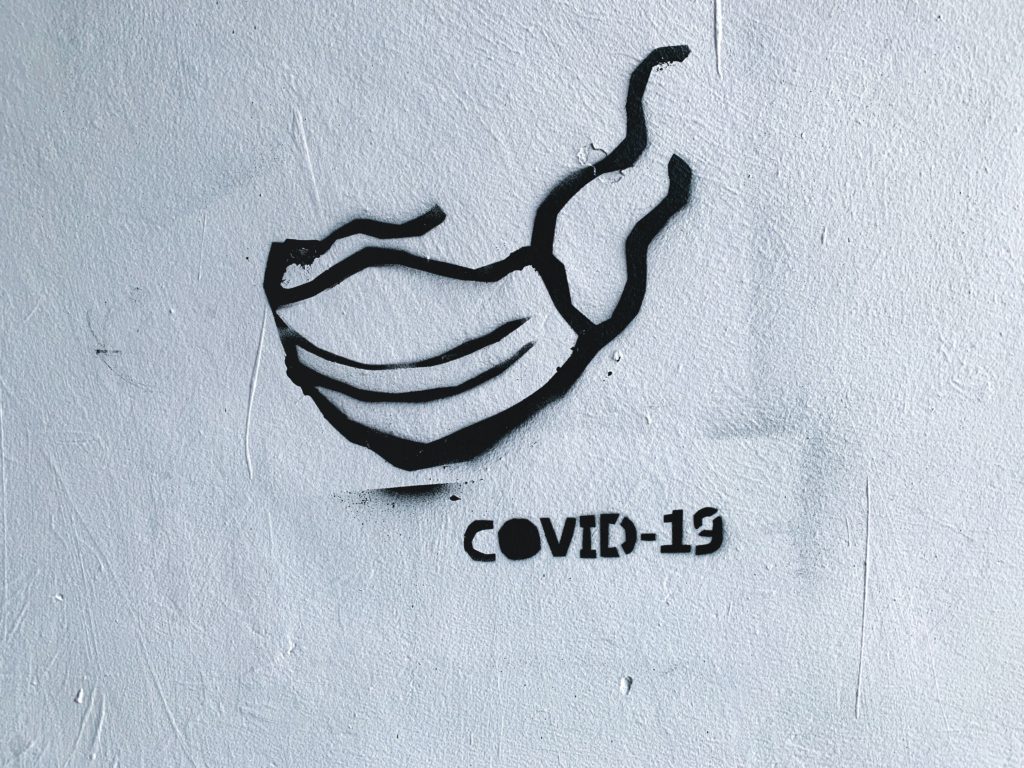
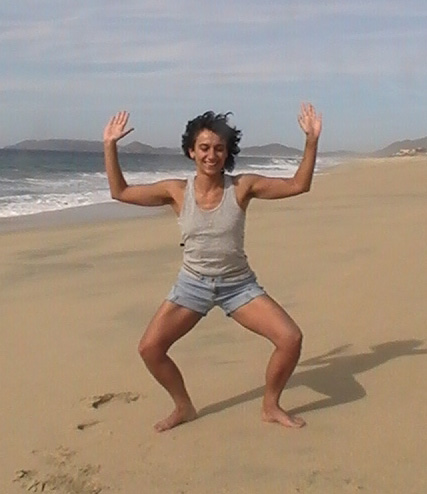

 Yoga mats will be spread 1.5 meters apart from each other
Yoga mats will be spread 1.5 meters apart from each other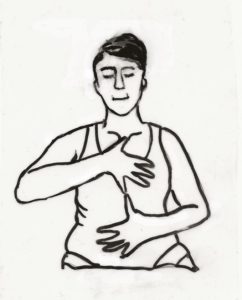

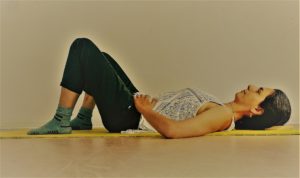 Lay down on your back with your head placed on top of some books for support (5 to 8cm as a starting point). Put the soles of your feet on the floor with your knees facing upwards towards the ceiling. Place your hands on the belly with the elbows pointing outwards
Lay down on your back with your head placed on top of some books for support (5 to 8cm as a starting point). Put the soles of your feet on the floor with your knees facing upwards towards the ceiling. Place your hands on the belly with the elbows pointing outwards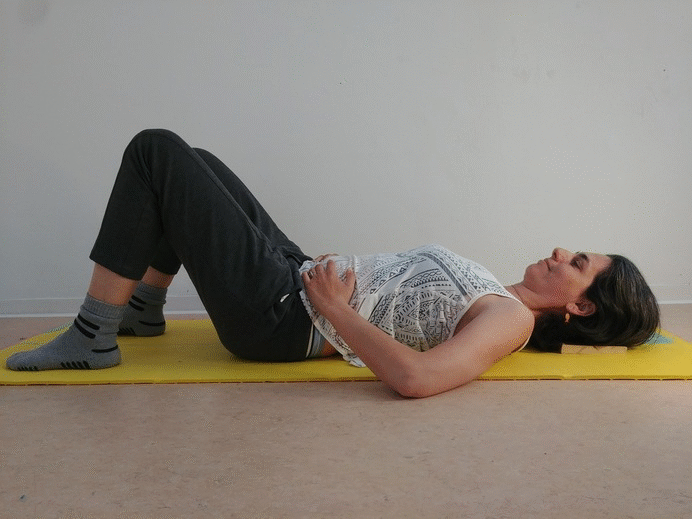
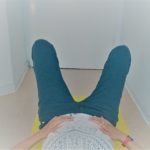
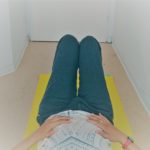 If you feel that you wanted to bring the knees inwards, you could try placing your feet closer to each other. If you feel that you wanted to let your knees go outwards, you could place the feet a bit further apart from each other. Do these changes to your feet make it easier for your knees to be pointing upwards without tension? Did this also bring a subtle change to the pathway of weight distribution in the soles of your feet?
If you feel that you wanted to bring the knees inwards, you could try placing your feet closer to each other. If you feel that you wanted to let your knees go outwards, you could place the feet a bit further apart from each other. Do these changes to your feet make it easier for your knees to be pointing upwards without tension? Did this also bring a subtle change to the pathway of weight distribution in the soles of your feet? Greetings Yogis,
Greetings Yogis,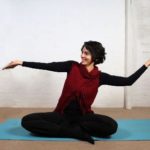 Hatha Yoga Classes Live Online
Hatha Yoga Classes Live Online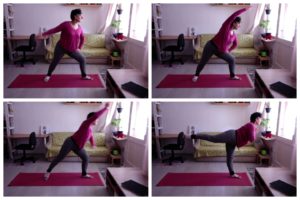
 We spend
We spend
